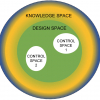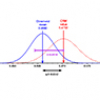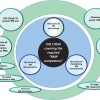Quality Matters Columns
Chris Burgess and John Hammond look back 40 years to the start of GLP regulations and consider how closely qualification processes are aligned to quality by design principles.
Peter Jenks and Alan Nichols plot a path through the accreditation jungle and decide that “Confidence: the key to quality”. With increasing numbers of readers’ labs requiring auditing, ensuring that the reference materials and standards you are using meet the requirements of the auditors is essential.
Next year, a new version of ISO/IEC 17025 will be published, which is going to mean changes for all those involved in quality systems. Peter Jenks investigates.
“Is your spectrometer in calibration?” ask Chris Burgess and John Hammond. The answer may not be as straightforward as you might think. However, Chris and John explain all.
Peter Jenks looks back to the BERM 14 conference on biological and environmental reference materials in the Quality Matters Column. The next conference in the series returns to Europe: Berlin in June 2018.
In the Quality Matters Column, Peter Jenks, Paul Boother and Annette Marshall are concerned about “The proper use of certified reference materials for analytical instrumentation qualification”. There are many aspects to consider in ensuring the validity of an analytical system, from before any instrumentation is installed, before it is used and during its use. Readers interested in the chemicals and reference material field may be interested in the news that, as this issue was being prepared, Merck completed its $17-billion acquisition of Sigma-Aldrich.
In the “The analysis of poly aromatic compounds: a never-ending story?”, Peter Jenks reports from the 25th International Symposium on Poly Aromatic Compounds. He was disappointed to find the near total absence of mention of the use of CRMs in method development or as a calibration material. He concludes that “data from the academic and research community often acts as a stimulus for government concern and the data may ultimately may result in legislation. It concerns me that legislation may be driven by bad data”.
John Hammond updates us on “Reference materials: what’s new?”. The 2015 meeting of the ISO Committee on Reference Materials (ISO/REMCO) was held in June and significant developments in a number of standards that will ultimately affect all users of reference materials have taken place.
In the Quality Matters Column, Peter Jenks reminds us about “BERM 14: it’s that time again!”. The latest in this line of conferences on Biological and Environmental Reference Materials is being held in the USA in October 2015.
C. Burgess and J.P. Hammond outline the work that has been undertaken to modernise the spectroscopic General Chapters in the United States Pharmacopeia (USP).
Peter Jenks seeks to show where it is important to check the CRM or RM you are using includes a clear statement of commutability, and when and where it can be largely ignored.
In the Quality Matters column, Peter Jenks and John Hammond look “Into the future: changes to ISO 17025 and ISO Guide 34”. There is a lot happening at present around ISO/IEC 17025 and ISO Guide 34, which together provide the framework for the development and use of certified reference materials in analytical laboratories around the world. John reports from the recent 37th meeting of the Reference Material Committee of ISO (ISO/REMCO) and provides an update on the topic of “commutability”.
Peter Jenks is off to a conference. He describes the history of the Biological and Environmental Reference Materials (BERM) series of conferences and concludes that they still are important for all of us 30 years after their start. He urges you to attend the next, in October 2015 in the USA.
John Hammond and Chris Burgess are also in the middle of a multi-part contribution to the Quality Matters column. “…that’s what I thought you said?” looks at further misundertandings in terminologies surrounding Reference Materials, and sets the record straight.
John Hammond reports on important developments at the ISO Committee on Reference Materials (ISO/REMCO) annual meeting.
Peter Jenks and John Hammond describe how the important ISO 17025 standard has developed, and point out that a review for the third edition of the standard will start soon. All those with an interest in quality standads—an increasing number of us—should make sure their voice is heard at their local standards body.
Peter Jenks argues that the two quality approaches, ISO 17025 and cGMP, are both lacking, but both could be made much better and virtually identical with single but different improvements!
Peter Jenks has discovered quantitative NMR. in his article titled “NMR: is it the future for the analysis of organic molecules?”. If only it wasn’t so expensive, it might be the perfect method to certify pure organic compounds.
Peter Jenks and John Hammond continue their series on “CRMs and PT in an ISO 17025 accredited laboratory” with instructions on how you can prepare your own in-house certified reference materials.





